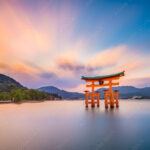Introduction
When is the best time to visit Japan?
Japan is a breathtaking destination that captivates travelers with its unique blend of tradition and modernity. Renowned for its stunning landscapes, rich history, and vibrant culture, Japan offers an unforgettable experience for every visitor. Whether you are drawn to the serene beauty of cherry blossoms in spring, the stunning autumn foliage, or the exhilarating hustle of Tokyo, this country has something special for everyone. The best time to visit Japan is truly a journey through the seasons, where each offers its own charm.
In addition to its natural wonders, Japan is home to **historical landmarks** such as ancient temples, shrines, and castles, showcasing the country’s rich heritage. The cultural experiences are equally enticing, with traditional tea ceremonies, sumo wrestling matches, and festivals that bring the streets to life. Whether you are wandering through the historic streets of Kyoto or indulging in delicious street food in Osaka, Japan promises a variety of memorable experiences.
For those seeking adventure, Japan’s diverse landscapes allow for various outdoor activities, from hiking in the Japanese Alps to skiing in Hokkaido. With its efficient transportation system, travelers can conveniently explore both urban and rural areas. This travel guide will help you navigate the best times and experiences Japan has to offer, ensuring you make the most of your visit while discovering the country’s breathtaking beauty.
Tourist Seasons
- Peak Seasons: March to May (cherry blossom season) and September to November (autumn foliage). During these months, tourist numbers surge due to pleasant weather and numerous festivals.
- Mid Seasons: June to August, particularly early August, sees a mix of tourism as families travel during summer vacations, though it can be hot and humid.
- Valley Seasons: December to February is generally off-peak for most regions, except for ski resorts in Hokkaido, which attract winter sports enthusiasts.
Weather Conditions & Seasonal Changes
Japan experiences four distinct seasons, each with its unique weather patterns.
- Spring (March to May): Average temperatures range from 10°C to 20°C with low precipitation, making it a great time for outdoor exploration.
- Summer (June to August): Temperatures can soar between 25°C and 35°C, with July and August experiencing the highest humidity and occasional typhoons bringing increased rainfall.
- Autumn (September to November): Average temperatures drop back to 10°C to 22°C, showcasing beautiful fall colors and relatively low precipitation.
- Winter (December to February): Expect cold temperatures ranging from 0°C to 10°C, with heavy snowfall in some regions, especially in the north.
Special Festivities & Events
- Hanami (Cherry Blossom Viewing): Celebrated in March and April, this event attracts many tourists eager to enjoy the fleeting beauty of cherry blossoms.
- Gion Matsuri: Taking place in July, this iconic festival in Kyoto features elaborate floats and traditional performances.
- O-Bon: A Buddhist festival in August that honors ancestors, featuring lanterns and family gatherings.
- Shichi-Go-San: A celebration for children aged three, five, and seven held every November, showcasing traditional attire and cultural rituals.
- New Year’s (Shōgatsu): The most important holiday in Japan, celebrated with special foods and customs from late December through early January.
Conclusion
Embarking on a journey to Japan offers a tapestry of experiences, highlighting the best time to travel to Ōtsu and beyond. With its stunning landscapes, rich culture, and vibrant festivals, you will create memories that last a lifetime. Let the beauty of Japan inspire your next adventure.


